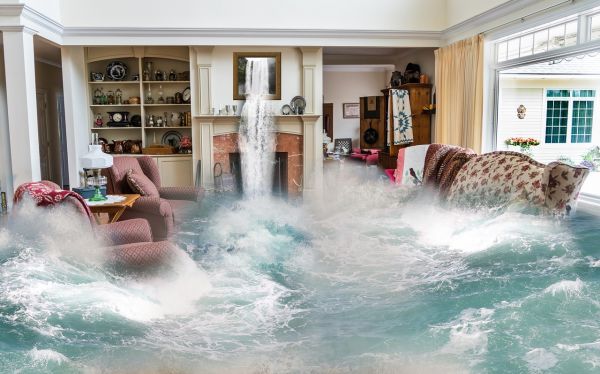Flooding can happen to anyone. Flood contributes, on average, to $54 billion worth of damages each year. Floods aren’t limited to mother nature problems like excessive thunderstorms or hurricanes. They can be caused by situations like a sewer being backed up or water pipe bursts. No matter how the flooding occurs, taking care of the situation quickly can help avoid some of the more damaging problems associated with flooding.
Immediately following a flood, whether it be from a storm or a backed-up pipe, you should contact your local water restoration company. The drying procedure must be done appropriately, otherwise risk problems like mold, which can be extremely more taxing and involved.
Extraction or Water Pump-Out
One of the first things a water restoration team will do is extract the water. It is necessary to get all water out of the home or commercial property before starting the restoration. Extraction can be accomplished using large pumps and hoses that take the water and move it outside. In some cases, a restoration company may have a truck capable of holding water, that allows them to contain and transport the excess away.
Structural Drying
After all the liquid is removed from the property, structural drying will need to take place. While yes, most of the water will be pumped out, this doesn’t include the water trapped in wood and drywall that can create more significant problems like mold. By removing the excess moisture, and restorations that will need to take place can happen with solid materials, and not those destroyed by water.
Applying An Antimicrobial
If you’ve seen flood damage, you’ve likely seen what can happen to the walls. Black spots will start to form, indicating an ongoing mold problem. No matter how long the water is allowed to sit, it can have time to saturate building materials. The saturation will cause mold to form, which needs to be addressed. Your water restoration company should apply an anti-microbial.
Dehumidifying
In the process of water restoration, using a dehumidifier will be necessary. This furthers the process of eliminating all traces of water from the structure and the air, allowing everything to dry. Many recommend that you dehumidify the property for a full two days to get the best results. The goal for dehumidifying is to dry all surfaces thoroughly, even those that are incredibly porous.
Carpet Removal
If the carpet has been affected by floodwaters, it is going to need replacing. There are little ways around this as carpet has a pad underneath that will become fully saturated with water and be extremely prone to mold. While the carpet could feel dry, underneath, there will be mold spores growing rampant. Your restoration company can remove and dispose of the carpet, as well as replace it after the drying process is completed.
Restore
After the property has completely dried, restorations can begin to take shape. This includes all the tasks designated to put the room or home back to pre-flood conditions. Some of these can include repairing or replacing drywall, repairing flooring, and painting.
Conclusion:
Immediately following a flood, you’ll want to contact your insurance company, if applicable, to send someone for pictures. After they have documented the extent of the damage, work can begin. Most homeowners are eager to return to their homes and live their lives normally. However, addressing the water situation and having proper drying and treatment is crucial.
For more information about water restoration services, visit Water Damage Restore online today.

